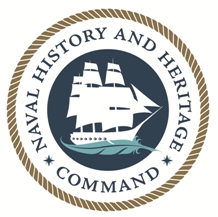Navy Ship's Deck Log Content
SECTION 19.
SECTION 19. CONTENTS
Deck Logs: Purpose, and Content
A Navy ship's deck log is a daily chronology of certain events for administrative and legal purposes.
- Absentees
- Accidents (material)
- Accidents/Injuries (personnel)
- Actions (combat)
- Appearances of Sea/Atmosphere/Unusual Objects
- Arrests/Suspensions
- Arrival/Departure of Commanding Officer
- Bearings (navigational)
- Cable/Anchor Chain Strain
- Collisions/Groundings
- Courts-Martial/Captain's Masts
- Deaths
- Honors/Ceremonies/Visits
- Incidents at Sea
- Inspections
- Meteorological Phenomena
- Movement Orders
- Movements (getting underway; course, speed changes; mooring, anchoring)
- Passengers
- Prisoners (crew members captured by hostile forces)
- Propulsion Plant Status changes
- Ship's Behavior (under different weather/sea conditions)
- Sightings (other ships; landfall; dangers to navigation)
- Soundings (depth of water)
- Speed Changes
- Tactical Formation
- Time of Evolutions/Exercises/Other Services Performed
A deck log identifies a ship's location and movements daily. If the ship is underway, its latitude and longitude are to be entered three times each day in blocks provided for the purpose. Deck logs are not narratives, and do not describe or explain a ship's operations.
Deck Logs: Location
Held by The National Archives
Logs from 1941 through those that are 30 years old or older are housed in the:
National Archives
8601 Adelphi Road
College Park MD 20740-6001
(301) 837-3510
These logs are open for research. Requests for research appointments, and inquiries concerning log information, should be sent to the National Archives in College Park, MD indicating the timeframe of interest (be as specific as possible).
Deck Log: Format
Deck logs are bulky documents. Prior to the 1980s, logs were kept on oversized (10 x 15 inch) paper, a typical log consisted of four or more pages per day.
A ship's deck log can run 120 pages or more per month, or over 1200 pages per year. There are some exceptions, but this seems to hold fairly true.
Deck Logs: What information is not in a deck log
- Shipyard Work
- Individual Work Assignments
- Events Occurring Elsewhere
- Medical Records - binnacle lists and morning reports of sick are not permanent records
- Deck logs are not "Captain's Logs." Captain's Logs do not exist in the United States Navy
When a ship is being overhauled at a shipyard, the deck log records the ship's presence at the shipyard, but does not identify the work being done or the materials being used. These logs do not record day-to-day work assignments of individual crew members. A deck log records events taking place on board the individual ship or, if pertinent, in its immediate vicinity. It does not include events taking place elsewhere, such as the activities of crew members on detached duty.
Deaths and Injuries
In cases of deaths and injuries suffered on board ship, the log should record the simple fact of the death or injury and note whether medical treatment was given to the injured. It does not go into detail as to specific treatment given, and does not record other medical matters, such as visits to sick bay or injuries not suffered on board ship.
Source: Naval History and Heritage Command
805 Kidder Breese Street, Southeast
Washington Navy Yard
Washington, D.C. 20374-5060
The Naval History and Heritage Command, is an Echelon II command responsible for the preservation, analysis, and dissemination of U.S. Naval history and heritage.
The Naval History and Heritage Command's lineage dates back to 1800 with the founding of the Navy Department Library by President John Adams, and form a rich history in themselves.
The Director of the Naval History and Heritage and Command, Curator of the Navy, is Samuel Cox, Rear Admiral U.S. Navy (Retired), Senior Executive Service.
